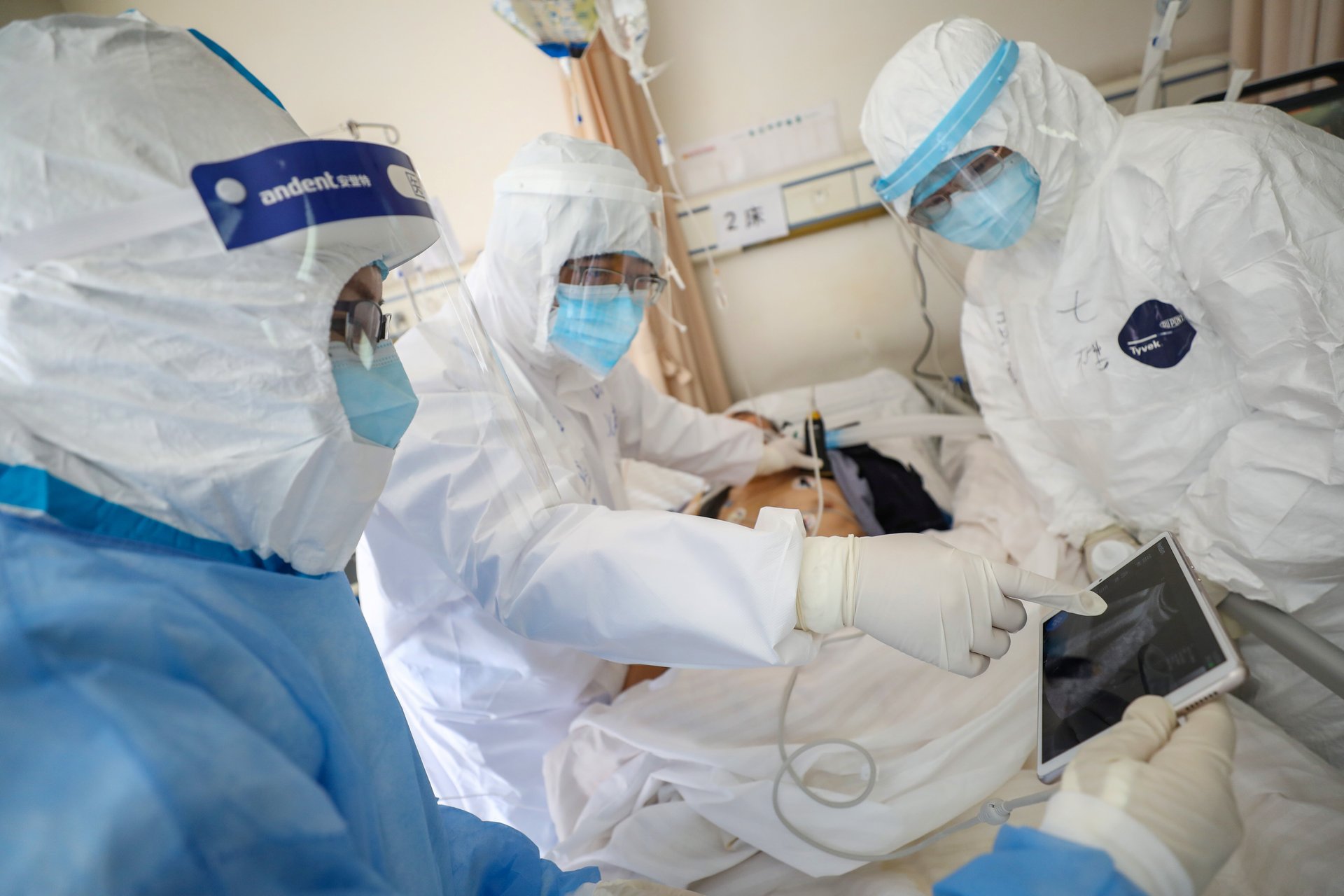Why a Chinese virology lab is unable to quell the coronavirus conspiracy theories around it
A Chinese state-owned virology lab in Wuhan, the epicenter of China’s coronavirus epidemic, is finding it extremely hard to quell conspiracy theories proliferating around the institution—a sign of the sharply decreased level of public trust in the government since the outbreak of the virus.


A Chinese state-owned virology lab in Wuhan, the epicenter of China’s coronavirus epidemic, is finding it extremely hard to quell conspiracy theories proliferating around the institution—a sign of the sharply decreased level of public trust in the government since the outbreak of the virus.
At the Wuhan Institute of Virology, a subsidiary of the state-owned research institute the Chinese Academy of Sciences (CAS), scientists carry out virus research at a lab with the highest level of biological containment available on the mainland. Its construction was approved in 2003, during China’s last deadly coronavirus outbreak, SARS, and completed five years ago, according to Nature journal. The lab came under spotlight in late January, after Chinese scientists said the virus could have a connection to bats via an intermediary, such as some form of game sold at a seafood market in Wuhan. As the lab has researchers who study bat-related viruses, it became a target of online suspicion that coalesced into theories that the virus could have escaped from the lab, or be a bio-weapon gone wrong.
An unvetted research paper published on Jan. 31 by a group of Indian scientists, in which they claimed similarities between the nCOV-2019 virus and the HIV virus, appearing to hint at human engineering, also stirred further controversy surrounding the institute. The paper was later withdrawn by the researchers, who said they “intend to revise it in response to comments received from the research community.”
Theories suggesting the new virus was purpose-built or the work of scientists have been emphatically rejected by scientists globally, including 27 prominent public health scientists from outside China who issued a statement on Wednesday published by medical journal The Lancet. “Scientists from multiple countries have published and analysed genomes of the causative agent…and they overwhelmingly conclude that this coronavirus originated in wildlife,” it said.
Some journals, such as Nature, have appended notes to older stories about the Wuhan lab calling the conspiracy theories about the lab “unverified.”

However, the rumors have kept spreading widely online, to the extent that Shi Zhengli, a lead researcher on bat-related viruses in the lab, posted on her WeChat account on Feb. 2 that the virus was “a punishment from the nature for humans’ uncivilized life habits,” and said she “guaranteed with her life” it was totally unrelated to the lab. But just as Shi’s assurance seemed to have calmed some down, a notice from the Chinese Ministry of Science and Technology last Saturday (Feb. 15) started a fresh wave of suspicion towards the lab.
The ministry said in the notice that China should enhance its management of viruses and bioagents at all labs and research institutes, without any explanation as to why this is being proposed right now, leaving some to speculate whether this could be a subtle official acknowledgement of a role played by the lab. The following day, US senator Tom Cotton appeared on Fox News to say that the virus was not far from the wildlife market where many people were infected in December.
There are a number of reasons why these theories keep finding many takers—not just among China hawks but among so many in China. One is, there’s still so much that isn’t known about the virus and its origins.
“At this stage, no expert can be absolutely certain about the cause of the outbreak. This uncertainty makes it easier for some people to think all explanations have equal merit, no matter how fringe that is for experts with more extensive knowledge in the matter,” explained assistant professor Masato Kajimoto, who researches misinformation ecosystems in Asia at the University of Hong Kong’s journalism school.
After Shi’s statement, the lab too has stepped out more than once to try quell the theories. The institute first rejected speculation that the first patient to be infected with the virus was a graduate student who studied at the lab, saying on Sunday (Feb. 16) the student is in good health. Yesterday (Feb. 19), it issued a strong worded statement (link in Chinese), saying the rumors about it have “hurt the feelings of its frontline researchers hugely” and “severely interfered” with its task to study viruses. “We have nothing to hide,” the letter read.
Nonetheless, internet users don’t appear to be convinced by the assurances from the lab. “What is the truth? The collapse of trustworthiness of media and government is not only sad for the two parties, but also for us citizens,” said a user on Weibo commenting on the rumors. “Some might think the so-called rumors are just a prophecy ahead of our times,” said another.
Some “rumors” from the early days of the epidemic after all turned out not to be far from reality. Li Wenliang, a doctor, had told others about a cluster of cases of viral pneumonia before the outbreak had been made public, but was summoned by Wuhan police for “spreading rumors.” He later became infected himself, and his death turned him into a vivid symbol of the costs of the government’s opacity—prompting an outpouring of anger and grief, and rare public demands for freedom of speech and transparency from the government.
“With the government’s bungled handling of the epidemic in Wuhan, and the pain and uncertainty the epidemic and the efforts to cope with it have produced, public trust has clearly decreased,” said Professor Dali Yang, a political scientist at University of Chicago via email. “The death of Dr. Li was a milestone in shared grief in China.”
What now can be done to contain theories of a rogue lab? Probably not a whole lot, says Kajimoto.
“When the authorities and experts have the history of not being transparent, whatever they say could sound as if they are trying to hide something,” said the assistant professor. “In this case, publicly denying the link between the lab and coronavirus could even be construed as ‘evidence’ by people who believe in this conspiracy because denial is the ‘sign’ that the truth is hidden.”
Tripti Lahiri contributed to this post.